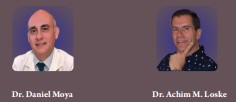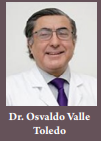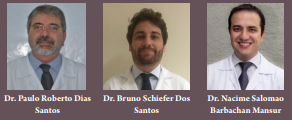Focused Shock Waves in Delayed Union and No-union after Intramedullary Nailing in Lower Limbs
Case Report | Vol 4 | Issue 1 | January-June 2024 | page: 06-08 | Josep Pous
DOI: https://doi.org/10.13107/jrs.2024.v04.i01.121
Author: Josep Pous [1]
[1] Orthopaedic Surgeon and Medical Director of CEMATEC, Barcelona, España.
Address of Correspondence
Dr. Josep Pous,
Orthopaedic Surgeon and Medical Director of CEMATEC, Barcelona, España.
E-mail: jpous@cematec.org
Abstract
Shock waves have changed medical therapy substantially. Accounting for the epidemiology of the treated diseases, this therapeutic tool may equal or even surpass the impact of extracorporeal shock wave lithotripsy. Lower limb fractures after intramedullary nailing generally heal without problems when there are good local conditions and no associated pathologies, but sometimes if the biomechanical or biological variables are not ideal, they can lead to a delay in healing or develop a non-union. Extracorporeal shock waves therapy is a treatment option in delayed union and no-union after intramedullary nailing in lower limbs cases in which there is mechanical stability of the fracture focus, as they can allow healing without the need for new surgeries.
Keywords: Extracorporeal shockwave therapy, Shock waves, Non-union, Delayed union
References:
1. Jensen SS, Jensen NM, Gundtoft PH, Kold S, Zura R, Viberg B. Risk factors for nonunion following surgically managed, traumatic, diaphyseal fractures: A systematic review and meta-analysis. EFORT Open Rev 2022;7:516-25.
2. Zura R, Mehta S, Della Rocca GJ, Steen RG. Biological risk factors for nonunion of bone fracture. JBJS Rev 2016;4:e5.
3. Sadat-Ali M, Al-Omar HK, AlTabash KW, AlOmran AK, AlDakheel DA, AlSayed HN. Genetic influence of fracture nonunion (FNU): A systematic review. Pharmgenomics Pers Med 2023;16:569-75.
4. Moya D, Ramón S, Schaden W, Wang CJ, Guiloff L, Cheng JH. The role of extracorporeal shockwave treatment in musculoskeletal disorders. J Bone Joint Surg Am 2018;100:251-63.
5. Zura R, Xiong Z, Einhorn T, Watson JT, Ostrum RF, Prayson MJ, et al. Epidemiology of fracture nonunion in 18 human bones. JAMA Surg 2016;151:e162775.
6. Tian R, Zheng F, Zhao W, Zhang Y, Yuan J, Zhang B, et al. Prevalence and influencing factors of nonunion in patients with tibial fracture: Systematic review and meta-analysis. J Orthop Surg Res 2020;15:377.
7. Rompe JD, Rosendahl T, Schöllner C, Theis C. High-energy extracorporeal shock wave treatment of nonunions. Clin Orthop Relat Res 2001;387:102-11.
8. Tamma R, Dell’Endice S, Notarnicola A, Moretti L, Patella S, Patella V, et al. Extracorporeal shock waves stimulate osteoblast activities. Ultrasound Med Biol 2009;35:2093-100.
9. Hofmann A, Ritz U, Rompe JD, Tresch A, Rommens PM. The effect of shock wave therapy on gene expression in human osteoblasts isolated from hypertrophic fracture non-unions. Shock Waves 2015;25:1:91-102.
10. Suhr F, Delhasse Y, Bungartz G, Schmidt A, Pfannkuche K, Bloch W. Cell biological effects of mechanical stimulations generated by focused extracorporeal shock wave applications on cultured human bone marrow stromal cells. Stem Cell Res 2013;11:951-64.
11. Wang CJ, Huang KE, Sun YC, Yang YJ, Ko JY, Weng LH, et al. VEGF modulates angiogenesis and osteogenesis in shockwave-promoted fracture healing in rabbits. J Surg Res 2011;171:114-9.
12. Li B, Wang R, Huang X, Ou Y, Jia Z, Lin S, et al. Extracorporeal shock wave therapy promotes osteogenic differentiation in a rabbit osteoporosis model. Front Endocrinol (Lausanne) 2021;12:627718.
13. Haupt G. Use of extracorporeal shock waves in the treatment of pseudarthrosis, tendinopathy and other orthopedic diseases. J Urol 1997;158:4-11.
14. Alkhawashki HM. Shock wave therapy of fracture nonunion. Injury 2015;46:2248-52.
15. Willems A, Van der Jagt OP, Meuffels DE. Extracorporeal shock wave treatment for delayed union and nonunion fractures: A systematic review. J Orthop Trauma 2019;33:97-103.
16. Sansone V, Ravier D, Pascale V, Applefield R, Del Fabbro M, Martinelli N. Extracorporeal shockwave therapy in the treatment of nonunion in long bones: A systematic review and meta-analysis. J Clin Med 2022;11:1977.
17. Wang CJ, Chen HS, Chen CE, Yang KD. Treatment of nonunions of long bone fractures with shock waves. Clin Orthop Relat Res 2001;387:95-101.
18. Cacchio A, Giordano L, Colafarina O, Rompe JD, Tavernese E, Ioppolo F, et al. Extracorporeal shock-wave therapy compared with surgery for hypertrophic long-bone nonunions. J Bone Joint Surg Am 2009;91:2589-97. Erratum in: J Bone Joint Surg Am 2010;92:1241.
19. Furia JP, Juliano PJ, Wade AM, Schaden W, Mittermayr R. Shock wave therapy compared with intramedullary screw fixation for nonunion of proximal fifth metatarsal metaphyseal-diaphyseal fractures. J Bone Joint Surg Am 2010;92:846-54.
20. Notarnicola A, Moretti L, Tafuri S, Gigliotti S, Russo S, Musci L, et al. Extracorporeal shockwaves versus surgery in the treatment of pseudoarthrosis of the carpal scaphoid. Ultrasound Med Biol 2010;36:1306-13.
21. Schaden W, Mittermayr R, Haffner N, Smolen D, Gerdesmeyer L, Wang CJ. Extracorporeal shockwave therapy (ESWT)–first choice treatment of fracture non-unions? Int J Surg 2015;24:179-83.
22. Haffner N, Antonic V, Smolen D, Slezak P, Schaden W, Mittermayr R, et al. Extracorporeal shockwave therapy (ESWT) ameliorates healing of tibial fracture non-union unresponsive to conventional therapy. Injury 2016;47:1506-13.
23. Sandoval C, Valenzuela A, Rojas C, Brañes M, Guiloff L. Extracorporeal shockwave therapy for atrophic and oligotrophic nonunion of tibia and femur in high energy trauma patients. Case series. Int J Surg 2017;9:36-40.

| How to Cite this article: Pous J. Focused Shock Waves in Delayed Union and No-union after Intramedullary Nailing in Lower Limbs. Journal of Regenerative Science 2024;January-June;4(1):06-08 |









